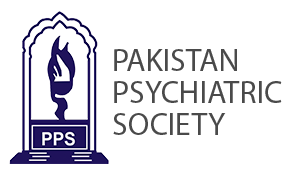DISASTERS & PSYCHOLOGICAL TRAUMA — CHALLENGE FOR PAKISTAN
Abstract
Psychological trauma, a new concept, came to Pakistan in the early 1990s when Karachi was under going crisis alongwith other social, geo-cultural and ethnic issues. This remained unrecognized generally until the devastating earthquake in October 2005 for which National Plan of Action for Earthquake Survivors was drafted that included model of emergency and post emergency response based on a 8 point model. In February 2007, the first national Centre for Trauma Research and Psychosocial Interventions (CTRPI) was established which is carrying out indigenous research projects and training activities. This article aims to examine the present efforts to address the trauma related mental health problems in Pakistan, identify the challenges we are facing and suggest future directions for services and research. The article also aims to raise awareness and debate about a crucial area of mental health which has become increasingly important with on going voilence in Pakistan but is largely neglected.
Downloads
References
Armed Forces Med J 2006; 56: 402-11.
2. Rana MH, Ali Sohail, Yusufi BZ Mental health and psychosocial relief of earthquake survivors - activities and interventions. Pak Armed Forces Med J 2006;
56:441-9.
3. Van Ommeren M, Suxana S, Saraceno B. Mental and social health during and after acute emergencies: emerging consensus?. Bull World Health Organ 2005;
83: 71-6.
4. IASC Guidelines for Mental Health and Psychosocial Support in Emergencies – IASC WG Approved; 25th Feb 2007 Version. [Online] 2007 [Cited on 2008,
November 15]. Available from URL: http:// www.humanitarianinfo.org/iasc.
5. Graham B, Talent J, Allison G, Cleveland R, Rademaker S, Roemer T, et al. World at Risk: The report of the Commission on Prevention of Weapons of Mass
Destruction, Pro-liferation and Terrorism. New York: VintageBooks, 2008.
6. International Federation of Red Cross Society (IFRCS), Manual of Disaster relief services for health providers, 2002.
7. Alexander DE. An Interpretation of Disaster in Terms of Changes in Culture, Society and International Relations. In: Perry RW, Quarantelli EL editors. What Is a
Disaster? New Answers to Old Questions. Philadelphia: Xlibris Press, 2005: p.1-15.
8. CRS Report for congress; Trends in Terrorism: 2006. [Online] 2007 [Cited on 2008, December 03]. Available from URL: http://fas.org/sgp/crs/terror/RL33555.pdf.
9. Country reports on terrorism 2007. [Online] 2008 [Cited on 2008, November 01]. Available from URL: http://www.state.gov/s/ct/rls/crt/2007.
10. The Centers for Disease Control and Prevention’s National Violent Death Reporting System (NVDRS). [Online] 2003 [Cited on 2008, November 18]. Available
from URL: http://www.cdc.gov/ncipc/profiles/nvdrs/facts.htm.
Copyright © JPPS. Published by Pakistan Psychiatric Society
Licensing: This work is licensed under Creative Commons Attribution-NonCommercial 4.0 International License
Readers may “Share-copy and redistribute the material in any medium or format” and “Adapt-remix, transform, and build upon the material”. The readers must give appropriate credit to the source of the material and indicate if changes were made to the material. Readers may not use the material for commercial purposes. The readers may not apply legal terms or technological measures that legally restrict others from doing anything the license permits.






.png)









